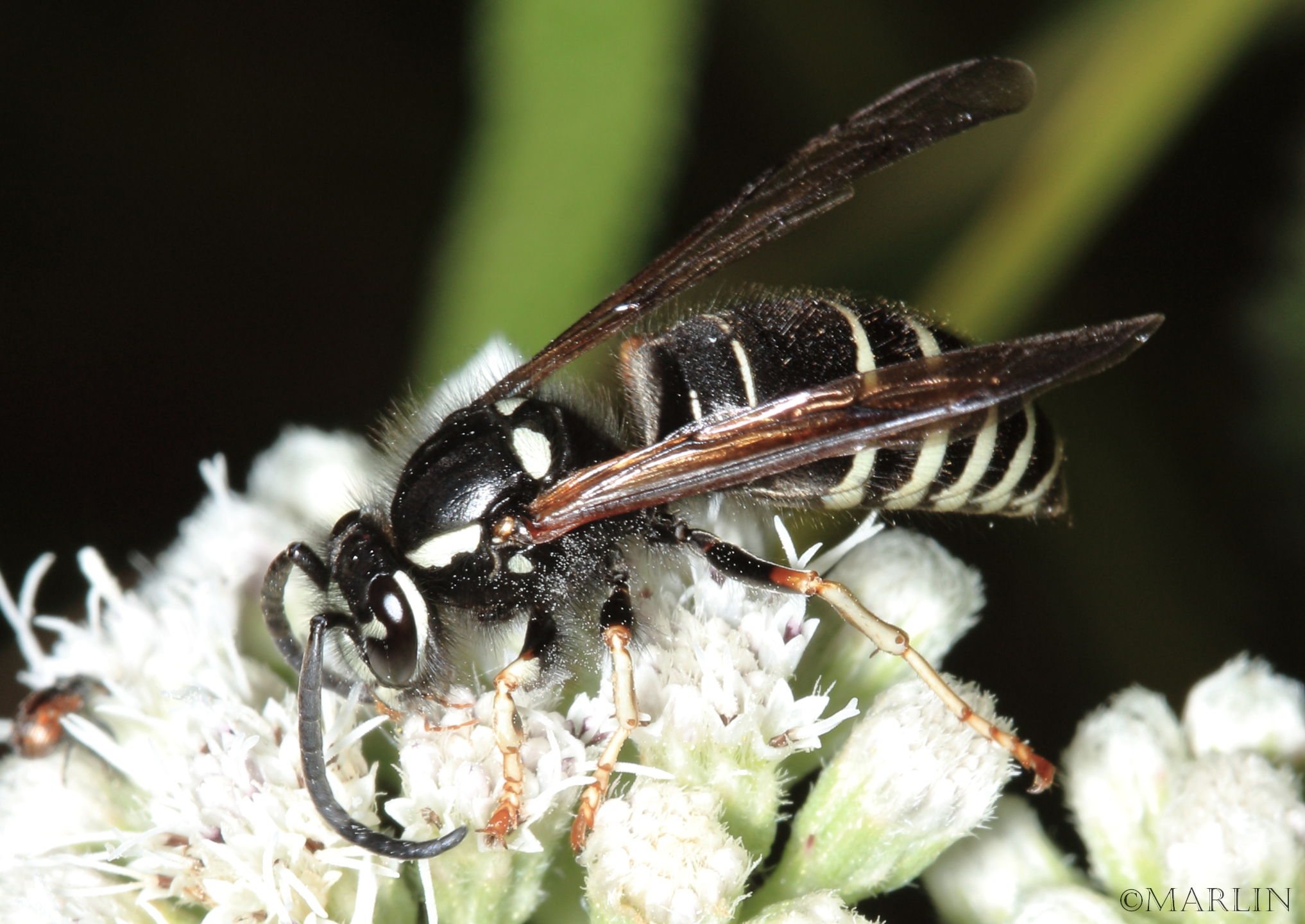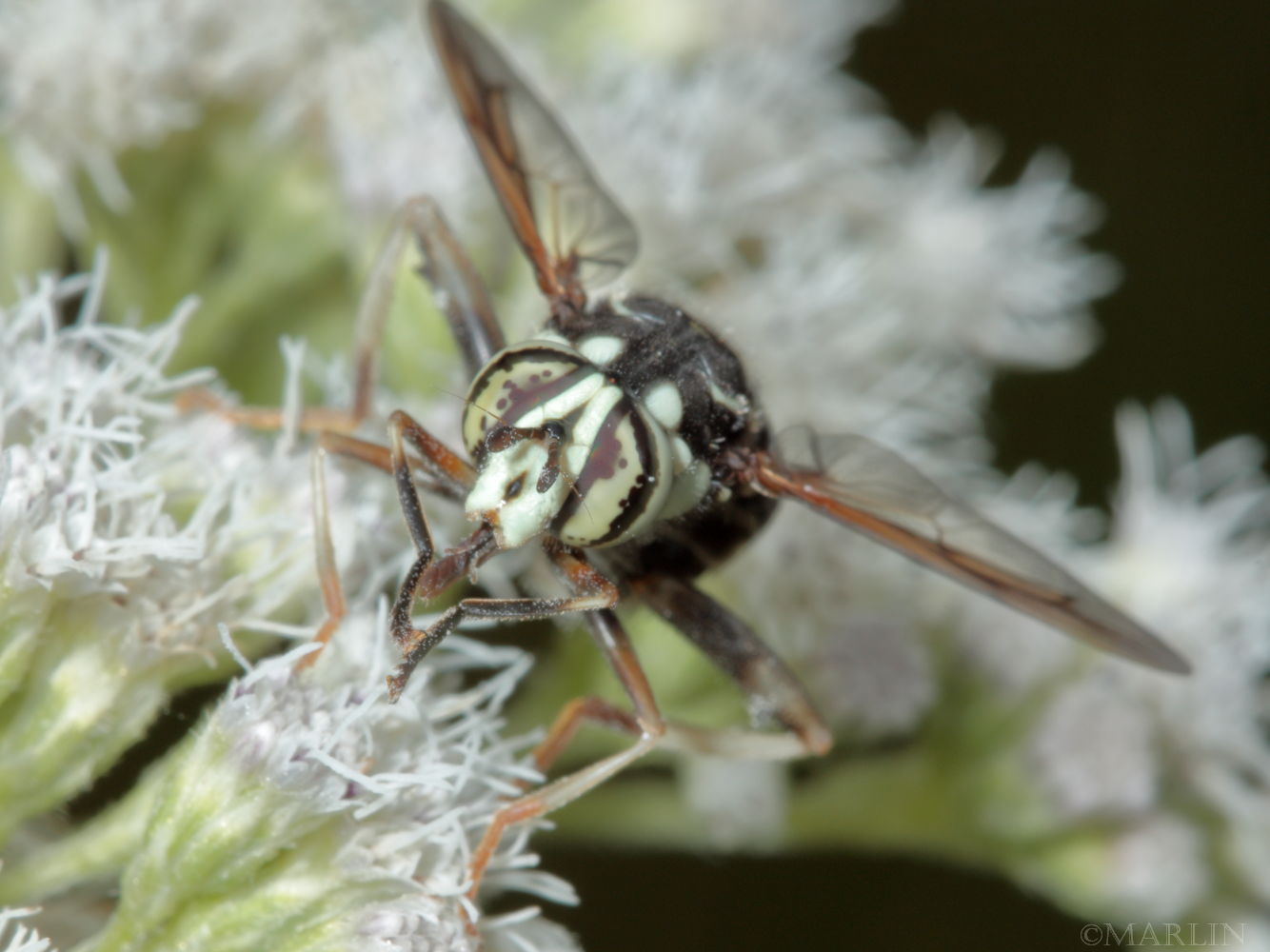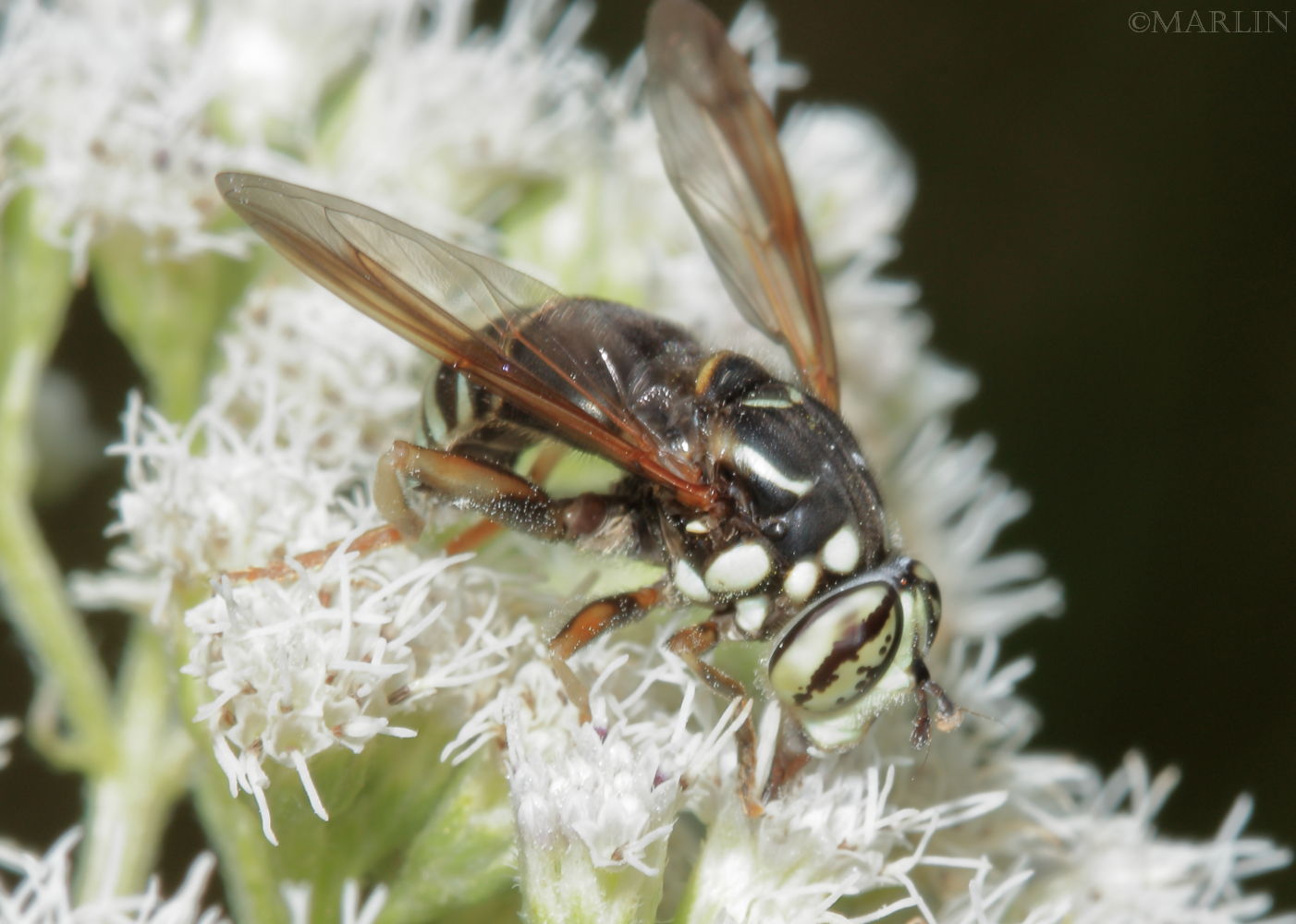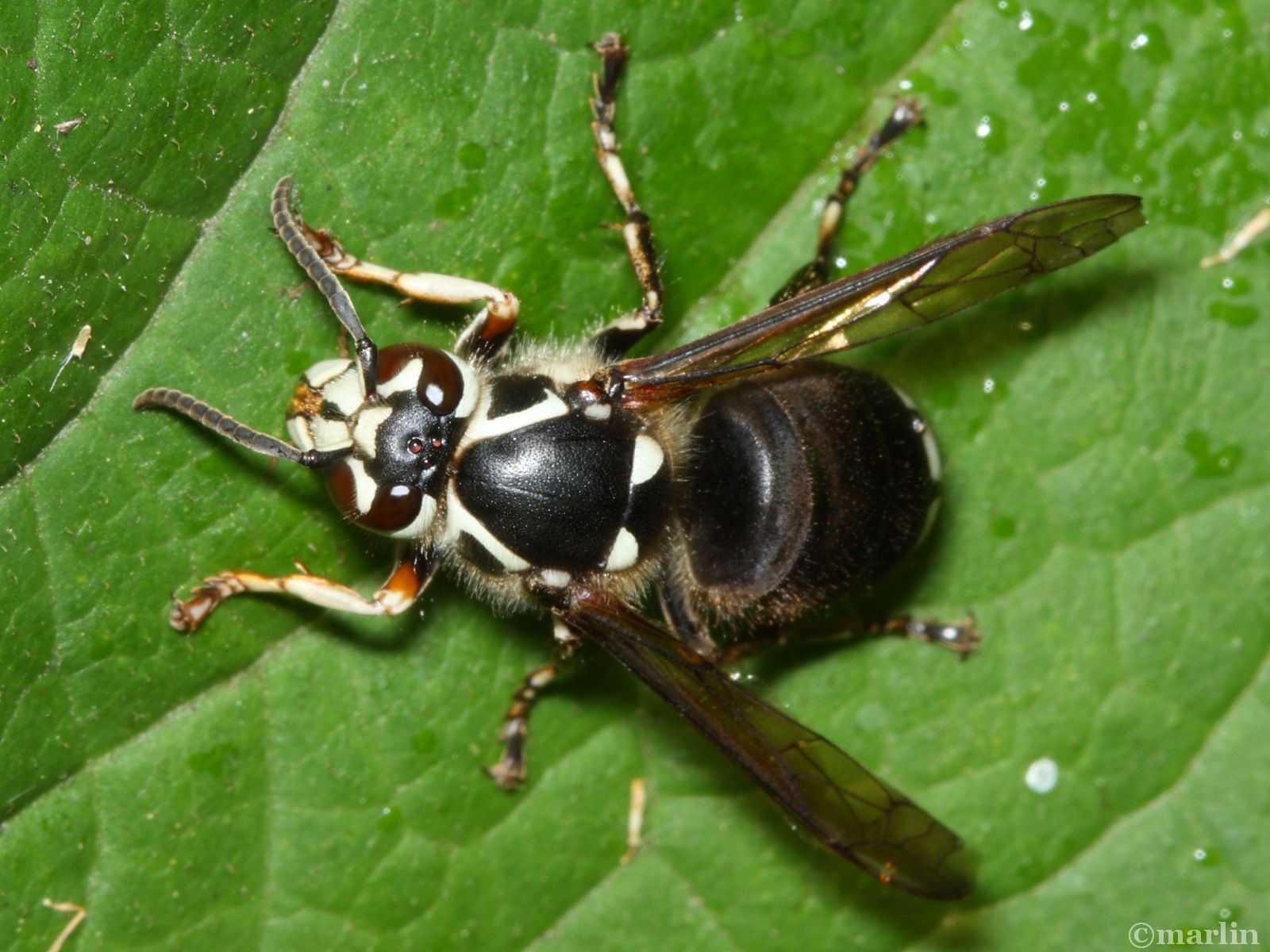Syrphid Fly – Spilomyia fusca
Syrphidae, or hoverflies, are valuable allies in the fight against aphid infestations in agriculture. Their efficient predation behavior, combined with their ability to reduce the reliance on chemical pesticides, makes them an essential component of integrated pest management strategies.
Many Syrphids are also important pollinators, and in both roles are considered beneficial insects. Home gardeners do well to plant flowers that attract them: Alyssum, Iberis umbellata, statice, buckwheat, chamomile, parsley, and yarrow. I know they like New England Aster as well. Heck, just about any flower will do!
Benefits of Syrphidae Aphid Predation
- Reduced Chemical Pesticide Use: The natural aphid control provided by Syrphidae reduces the need for chemical pesticides in agriculture. This reduction helps minimize the environmental impact associated with pesticide application.
- Enhanced Crop Yields: By curbing aphid populations, Syrphidae contribute to healthier and more productive crops. This, in turn, supports global food production and security.
- Biodiversity Conservation: Promoting the presence of hoverflies in agricultural landscapes fosters biodiversity by providing habitat and sustenance for these beneficial insects.

References
- Bugguide.net, Syrphid Fly – Spilomyia fusca
- University of California, DANR, “Biological Control Agents for Aphids in Vegetable Crops“




